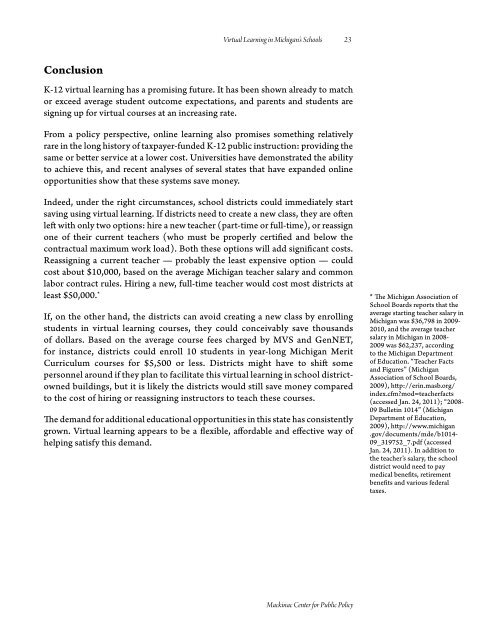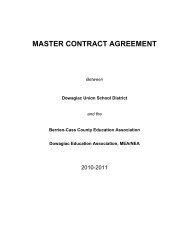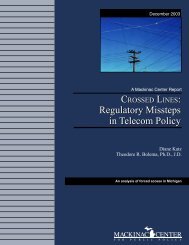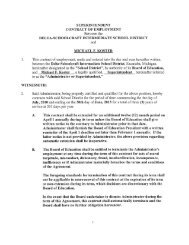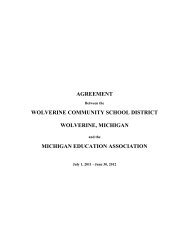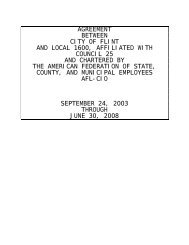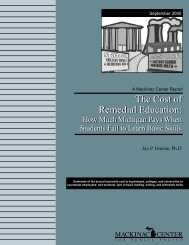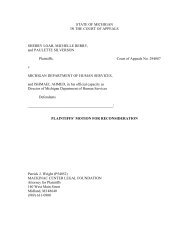by Michael Van Beek - Michigan Virtual University
by Michael Van Beek - Michigan Virtual University
by Michael Van Beek - Michigan Virtual University
Create successful ePaper yourself
Turn your PDF publications into a flip-book with our unique Google optimized e-Paper software.
<strong>Virtual</strong> Learning in <strong>Michigan</strong>’s Schools 23ConclusionK-12 virtual learning has a promising future. It has been shown already to matchor exceed average student outcome expectations, and parents and students aresigning up for virtual courses at an increasing rate.From a policy perspective, online learning also promises something relativelyrare in the long history of taxpayer-funded K-12 public instruction: providing thesame or better service at a lower cost. Universities have demonstrated the abilityto achieve this, and recent analyses of several states that have expanded onlineopportunities show that these systems save money.Indeed, under the right circumstances, school districts could immediately startsaving using virtual learning. If districts need to create a new class, they are oftenleft with only two options: hire a new teacher (part-time or full-time), or reassignone of their current teachers (who must be properly certified and below thecontractual maximum work load). Both these options will add significant costs.Reassigning a current teacher — probably the least expensive option — couldcost about $10,000, based on the average <strong>Michigan</strong> teacher salary and commonlabor contract rules. Hiring a new, full-time teacher would cost most districts atleast $50,000.*If, on the other hand, the districts can avoid creating a new class <strong>by</strong> enrollingstudents in virtual learning courses, they could conceivably save thousandsof dollars. Based on the average course fees charged <strong>by</strong> MVS and GenNET,for instance, districts could enroll 10 students in year-long <strong>Michigan</strong> MeritCurriculum courses for $5,500 or less. Districts might have to shift somepersonnel around if they plan to facilitate this virtual learning in school districtownedbuildings, but it is likely the districts would still save money comparedto the cost of hiring or reassigning instructors to teach these courses.The demand for additional educational opportunities in this state has consistentlygrown. <strong>Virtual</strong> learning appears to be a flexible, affordable and effective way ofhelping satisfy this demand.* The <strong>Michigan</strong> Association ofSchool Boards reports that theaverage starting teacher salary in<strong>Michigan</strong> was $36,798 in 2009-2010, and the average teachersalary in <strong>Michigan</strong> in 2008-2009 was $62,237, accordingto the <strong>Michigan</strong> Departmentof Education. “Teacher Factsand Figures” (<strong>Michigan</strong>Association of School Boards,2009), http://erin.masb.org/index.cfm?mod=teacherfacts(accessed Jan. 24, 2011); “2008-09 Bulletin 1014” (<strong>Michigan</strong>Department of Education,2009), http://www.michigan.gov/documents/mde/b1014-09_319752_7.pdf (accessedJan. 24, 2011). In addition tothe teacher’s salary, the schooldistrict would need to paymedical benefits, retirementbenefits and various federaltaxes.Mackinac Center for Public Policy


